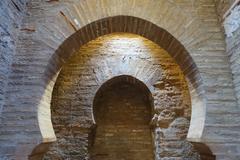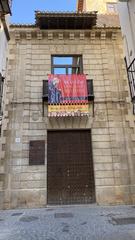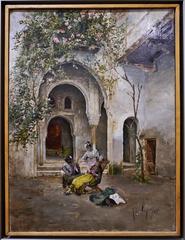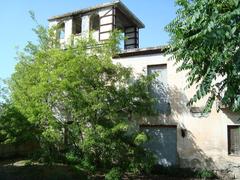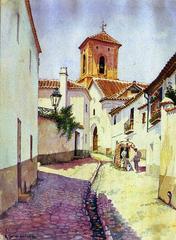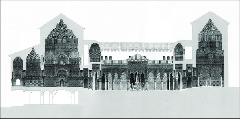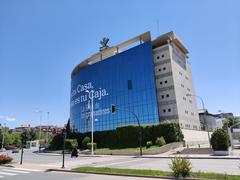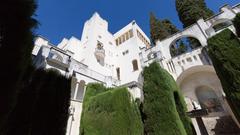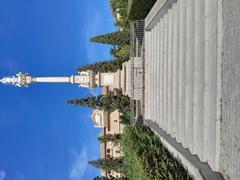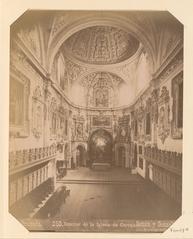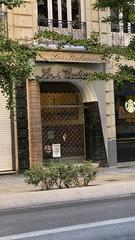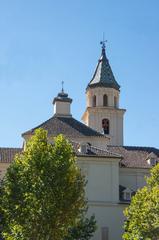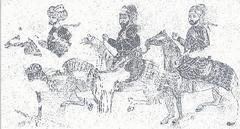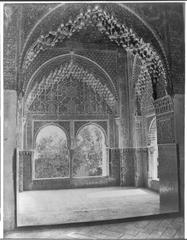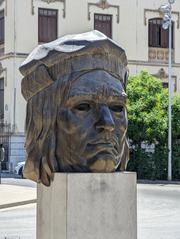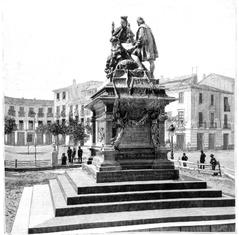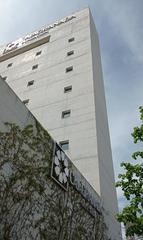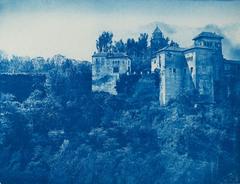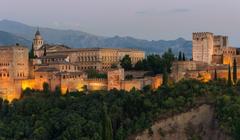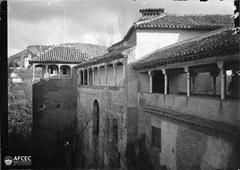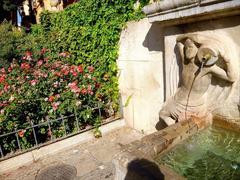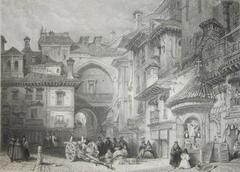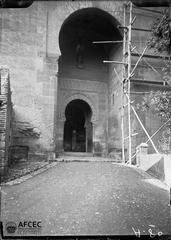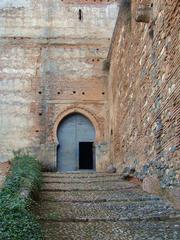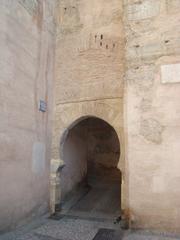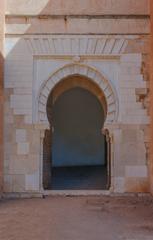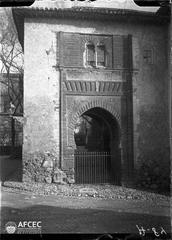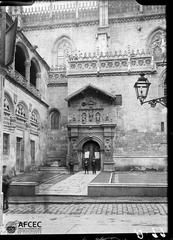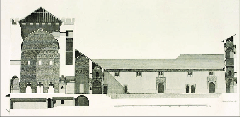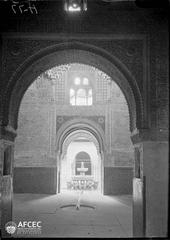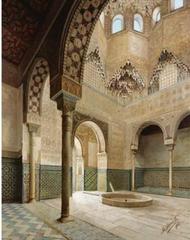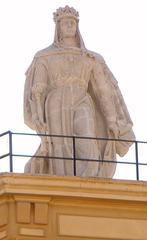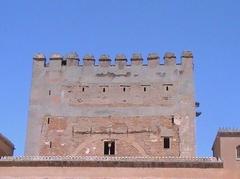Paseo del Padre Manjón: Visiting Hours, Tickets, and a Complete Guide to Granada’s Historic Promenade
Date: 14/06/2025
Introduction
Nestled along the banks of the Darro River and set between the historic Albaicín quarter and the majestic Alhambra, Paseo del Padre Manjón—better known as Paseo de los Tristes—is one of Granada’s most evocative and beloved promenades. Originally established in the early 17th century, this riverside walkway has evolved from a vital social hub and urban artery into a living tapestry of history, architecture, and contemporary Andalusian culture. Its dual identity—named officially after the influential educator Padre Manjón and colloquially as the “Promenade of the Sad Ones” due to its association with funeral processions—reflects the multifaceted spirit of Granada itself.
Whether you are a history enthusiast, art lover, or traveler in search of picturesque views and authentic tapas, this guide covers everything you need to know for an enriching visit. Explore detailed insights into the promenade’s layered past, architectural and natural highlights, key visitor information, and practical travel tips. For further details, refer to resources such as Cicerone Granada, Passporter, and Granada City Tour.
Table of Contents
- Introduction
- Historical Overview
- Visitor Information
- Key Sights and Attractions
- Experiences and Activities
- Nearby Attractions
- Accommodation Options
- FAQ
- Travel Tips
- Conclusion
- References
Historical Overview
Origins and Urban Development
Paseo del Padre Manjón was constructed in 1609 on land donated by the Lords of Castril following a gunpowder explosion at the nearby Church of Saints Peter and Paul. This redevelopment gave Granada a vital new public space, initially named Paseo de la Puerta de Guadix, referencing the city gate at its terminus. The central fountain, dating from the same year, remains a focal point today, symbolizing the city’s commitment to public works and community spaces (Nomads Travel Guide).
Significance of the Name
While its official name honors Andrés Manjón y Manjón, a pioneering educator, the promenade is popularly known as Paseo de los Tristes (“Promenade of the Sad Ones”). This moniker dates to the 19th century, when the walkway became the main route for funeral processions to the San José Cemetery atop Sabika Hill. Mourners would gather here to bid farewell before the final ascent, leaving a poignant legacy that contrasts with the vibrancy of the present-day promenade (Barceló Guide; Hey Granada).
Social and Urban Role
From its inception, the Paseo was a focal point for city life—hosting festivals, open-air markets, bullfights, and public celebrations. Its strategic position between the Alhambra and Albaicín, parallel to the Darro River, established it as a natural meeting place for locals and visitors. Historic bridges such as Puente de las Chirimías and Puente del Aljibillo enhanced its connectivity (Go2Alhambra).
Architectural Heritage
The promenade is lined with a remarkable array of Renaissance, Moorish, and 19th-century buildings. Highlights include the Renaissance Church of Saints Peter and Paul with its blend of Plateresque and Mudejar styles, Casa Castril—now home to the Archaeological Museum of Granada—and the Casa de las Chirimías, famed for its role in musical festivities (granada.city-tour.com; Nomads Travel Guide).
Padre Manjón’s Legacy
The official name commemorates Andrés Manjón (1846–1923), a priest and educator who founded the Ave María Schools for underprivileged children in Granada. His bust stands near the central fountain, a testament to his enduring impact on the city’s educational and social life (Hey Granada; Go2Alhambra).
Contemporary Cultural Scene
Today, the Paseo is alive with music, art, and gastronomy. Street performers, flamenco musicians, and seasonal festivals keep its festive spirit intact. Lively tapas bars and cafés line the riverbank, making it a favorite spot for both locals and visitors, especially in the evenings when the Alhambra is illuminated (Barceló Guide).
Visitor Information
Visiting Hours
- Paseo del Padre Manjón is a public space open 24 hours a day, year-round.
- Restaurants, bars, and museums along the promenade have their own operating hours, generally from late morning to late evening.
Tickets and Guided Tours
- No ticket is required to access the promenade itself.
- Guided walking tours are available and often include the Paseo as part of broader itineraries through the Albaicín and Alhambra.
- The Archaeological Museum of Granada (Casa Castril) typically opens from 10:00 AM to 6:00 PM, with an entry fee.
Accessibility
- The promenade is largely pedestrian and features cobblestone pavement.
- Most areas are accessible, though some uneven surfaces and gradients may present challenges for visitors with mobility impairments.
- Ramps and accessible facilities are available near Plaza Nueva.
How to Get There
- On Foot: From Plaza Nueva, follow Carrera del Darro for approximately 10–15 minutes along the river.
- Public Transport: Minibuses C31 and C32 stop near Plaza Nueva, the main gateway to the promenade.
- By Car: Vehicular access is very limited; it is advisable to park outside the historic center and walk.
Facilities
- Public restrooms are limited; visitors often use facilities in nearby cafés or restaurants.
- Shaded benches and riverside terraces offer comfortable spots for rest and refreshment.
Best Times to Visit
- Morning: Quieter, ideal for photography and exploration.
- Late Afternoon/Evening: Livelier atmosphere, best for views of the illuminated Alhambra and enjoying local tapas.
Key Sights and Attractions
Architectural Landmarks
- Church of Saints Peter and Paul: A Renaissance gem featuring Plateresque and Mudejar details, notable for its stonework and Baroque sculptures by Pedro de Mena (granada.city-tour.com).
- Casa Castril: 16th-century noble residence, now housing the Archaeological Museum, with a tranquil patio and elegant façade (granada.city-tour.com).
- Casa de las Chirimías: Historic building used for musical performances during festivities (Nomads Travel Guide).
Natural Highlights
- Darro River: Lined with willows and poplars, its gentle flow and birdsong create a tranquil backdrop.
- Alhambra Views: The fortress-palace rises above the promenade; sunset and nighttime views are especially iconic.
- Albaicín Hillside: Whitewashed houses and terraced gardens on the opposite bank offer a classic Andalusian vista.
Plazas and Public Spaces
- Plaza de los Tristes: Central meeting point with outdoor cafés and lively street life.
- Riverside Terraces: Perfect for enjoying drinks or meals with panoramic Alhambra views.
Experiences and Activities
Tapas and Dining
Granada is famed for complimentary tapas with drinks. Enjoy local specialties at riverside bars and cafés, with vegetarian options available at select venues such as El Jergón (Solo Sophie). The evening is the liveliest time for dining, music, and socializing.
Guided Tours
Guided walking tours through the Albaicín, Sacromonte, and the Paseo itself are highly recommended for historical context and local legends (Cicerone Granada). Booking in advance is advised during peak travel times.
Seasonal and Cultural Events
The promenade hosts flamenco performances, street music, and cultural festivals, particularly during the Corpus Christi celebration and other local holidays.
Nearby Attractions
- Alhambra: Granada’s UNESCO-listed palace complex is a short climb from the promenade.
- Albaicín: Historic Moorish quarter with labyrinthine streets and spectacular viewpoints.
- Sacromonte: Known for cave dwellings, flamenco shows, and panoramic city views.
- Mirador de San Nicolás: Offers the city’s best view of the Alhambra, especially at sunset.
Accommodation Options
The surrounding area offers a range of accommodations, from boutique hotels and guesthouses to apartments with Alhambra views. Popular options include Bellavista in the Albaicín and 4U Hostel for budget travelers (Solo Sophie).
Frequently Asked Questions (FAQ)
Q: What are the visiting hours for Paseo del Padre Manjón?
A: The promenade is open 24/7; museums and restaurants have individual hours.
Q: Do I need a ticket to visit Paseo del Padre Manjón?
A: No, it is a public space with free access.
Q: Is the area accessible for people with limited mobility?
A: Largely accessible, but cobblestones and some inclines may require assistance.
Q: How do I get there?
A: The best approach is on foot from Plaza Nueva via Carrera del Darro; minibuses also stop nearby.
Q: When is the best time to visit?
A: Early morning for tranquility and light; late afternoon and evening for lively atmosphere and sunset views.
Travel Tips
- Wear comfortable shoes for cobblestone streets.
- Bring water and sun protection, especially in summer.
- Arrive early or later in the day to avoid crowds.
- Check opening hours for museums and guided tours in advance.
- Download the Audiala app for guided tours and offline maps.
Conclusion
Paseo del Padre Manjón is more than a scenic walkway—it is a living testament to Granada’s layered history, diverse architecture, and dynamic social life. With its blend of Renaissance and Moorish buildings, riverside ambiance, and unparalleled views of the Alhambra, the promenade encapsulates the enduring spirit of Granada. Whether you linger over tapas, join a guided tour, or simply stroll along the Darro at sunset, this historic promenade promises an unforgettable experience. For the most up-to-date information and inspiration, consult Granada Tourism Official Site and our recommended resources.
References and Further Reading
- Why is it called Paseo de los Tristes? – Cicerone Granada
- Passporter: Paseo de los Tristes Guide
- Granada City Tour – Paseo de los Tristes
- Paseo de los Tristes: History and Visitor Tips – Balea Travel
- Hey Granada: Visiting Paseo de los Tristes
- Barceló Guide: Paseo de los Tristes
- Nomads Travel Guide: Paseo de los Tristes and Casa de las Chirimías
- Granada Tourism Official Site
- Solo Sophie: One Day in Granada
- Visit Southern Spain: Granada Itinerary
- The Planet D: Things to Do in Granada

